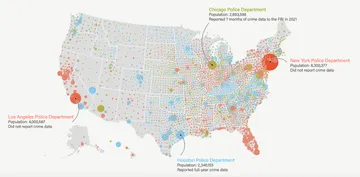Each time a sentencing reform measure is passed or enacted – California’s Proposition 47, for example, or Texas’s landmark initiatives – hopeful officials and concerned public figures seem to see it as a sign of a long-anticipated and decisive turn against mass incarceration.
And why not? Didn’t the Pew Charitable Trusts just last week publish a chart that shows that most states figured out a way to cut both crime and incarceration between 2008 and 2013?
But new statistics out today from the same Pew Charitable Trusts suggest that most states remain skeptical of their ability to significantly reduce incarceration rates. These new figures complement statistics released in September by the Bureau of Justice Statistics that tracked a slight rise in state prison populations offset by a slight decrease in the federal prison population (the first such federal decrease since 1980).
Officials in 28 states told the folks at Pew that they expect their inmate populations to rise in the next four years. Officials in only six states say they expect a decline: Pew memorialized figures only for those states (34) that offered prisoner projections up to 2018. Seven states provided some figures but not enough to be included in this graph:
Iowa projects the largest increase – 16 percent – in their prison population. Pennsylvania projects the biggest decrease: 6 percent. Nine states did not respond to Pew at all, and some on that list are interesting omissions. For example, Alabama, Georgia, Mississippi, Oklahoma, and South Carolina, all of which have relatively high incarceration rates, did not answer Pew (this map is helpful in seeing where each state falls along the continuum). We are left to guess about whether prison populations in those venues are expected to expand or contract between now and 2018.
Or not guess. In Oklahoma, for example, we know that the prison population is expected to increase, so much so that state lawmakers asked for an extra $85 million on behalf of the department of corrections, $26 million of which evidently is earmarked to deal with the growth of the state’s inmate population. The request prompted an instant-classic line last month from the editorial board of The Oklahoman, the state’s largest newspaper:
The Oklahoma Department of Corrections budget request for the next fiscal year prompts the question: Will state policymakers ever seriously entertain policies that might help this state spend less on corrections?
We don’t have to guess about which direction the prison population is going in Alabama, either. The state’s prison population is currently at 190 percent capacity. Which helps explain why a “Prison Reform Task Force” is working on ways to send fewer Alabama citizens to prison and release a larger number of inmates more quickly. (Here is a good, recent piece in the Montgomery Advertiser that helps explain the scope of the problem and where things stand.)
Nor do we have to guess about Mississippi – but here’s a surprise. The state this past March enacted comprehensive criminal reform legislation that will surely keep the prison population there from growing and is projected to lower the number of inmates in state facilities. Who helped spearhead this change? Christopher Epps, the state’s former corrections chief, who earlier this month was forced to resign amid a corruption scandal that resulted in his federal indictment.
Another state missing from Pew’s list is Georgia. It also represents something of a success story. Gov. Nathan Deal has signed into law several criminal justice reform measures that have helped reverse that state’s dramatic increase in inmate population in just a few years. The reforms have saved the state approximately $20 million. The same can be said for South Carolina, which also enacted reforms and saved millions of dollars by reducing its inmate population.
These examples – both the successes and failures – illustrate the point Pew and its collaborators are trying to make. State officials now have a modern, current roadmap to reducing mass incarceration in a way that protects public safety and results immediately in substantive savings from lower inmate populations. The model clearly works. Why some states are following it, and others not, is a fascinating dichotomy that helps explain why some nonviolent offenders will continue to remain in American prisons and why some won’t.
